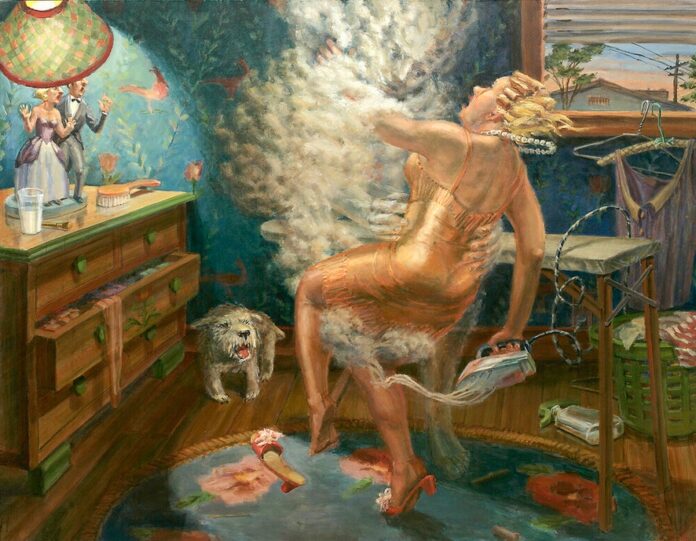Artist and educator M. Louise Stanley—“Lulu” to her friends—captures the imagination and confronts social issues through a humorous storytelling style of art that has made her a Bay Area legend for half a century.
Now, MarinMOCA in Novato is celebrating Stanley’s impressive body of work in a new retrospective exhibition, “M. Louise Stanley: No Regrets.”
Drawing from 50 years of Stanley’s art—and highlighting her socially conscious subject matter—the exhibit opens for by-appointment viewing on Saturday Feb. 27 and runs through April 18.
“When you begin, you don’t know where you’re going, and you don’t know where you’ll end up,” Stanley says. A granddaughter of missionaries, Stanley says she knew at a young age that “art was going to be my religion.”
Already a technically proficient artist when she came to the Bay Area in 1965 from Southern California to attend the California College of Arts and Crafts—now called the California College of the Arts—she wanted to be more than proficient.
“In those years, you had to have an authentic mark,” Stanley says. “You had to develop your own style that you could put your name to. That was my big quest.”
In graduate school, Stanley and her friends started a practice of making “bad art” that would allow them to break all the rules of “serious art.”
From there, she became involved in artist movements like the feminist movement of the 1970s. Yet, Stanley often stands alone in the art world for the boldness and deft commentary found in her richly colored paintings, which can simultaneously evoke the power of ancient Gods or the milieu of modern banality.
Stanley’s most famous works feature exaggerated characterizations of subjects that range from 1940s housewives to ancient Roman deities. These subjects often appear in juxtaposing, post-modern scenarios that find angelic muses hunched over computers or Venus applying lipstick while surrounded by beer cans.
“You don’t draw what you see, you draw how you feel about it,” Stanley says. “The reason I was distorting the figures, I was trying to get at the idea of a person, not necessarily what they looked like, but how I felt about them.”
At times, Stanley enhances her neoclassical scenes by painting classical faux-frames on the edges of her canvas or creating works that resemble altarpieces called “predellas.”
“I paint Italian paintings with an American accent,” Stanley says.
After exhibiting in five solo shows in 2019, Stanley went into retrospective mode at the onset of Covid, though she still draws in her sketchbooks and makes artistic protest signs.
“I like to paint with my friends and have a dialogue over the paint,” she says. “I don’t know when it’s going to get back to that, but you have to live day to day and do what you’re going to do. I can’t wait to finish framing (for this show) so I can get back to painting!”











